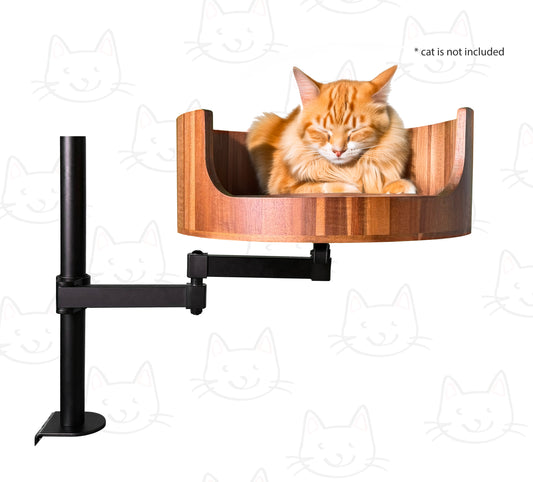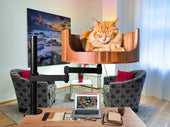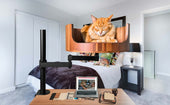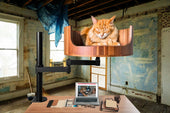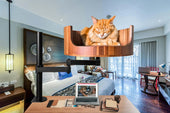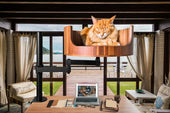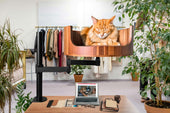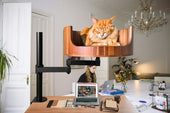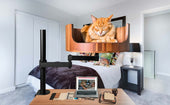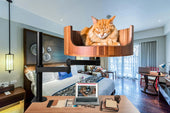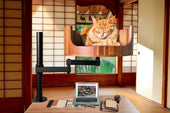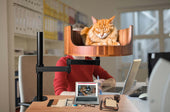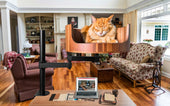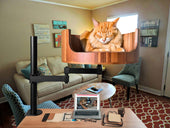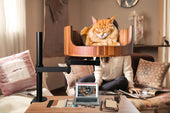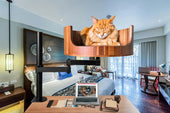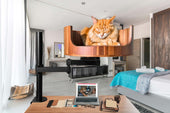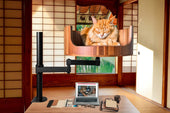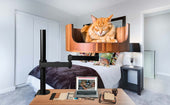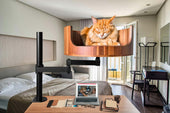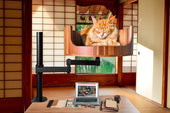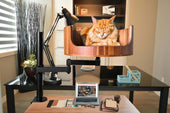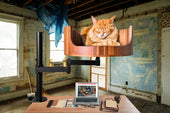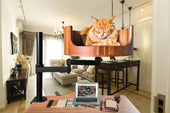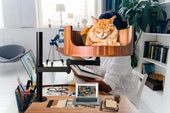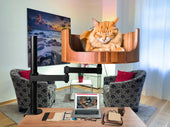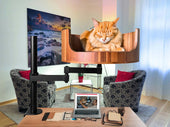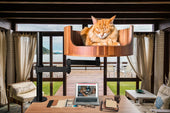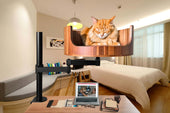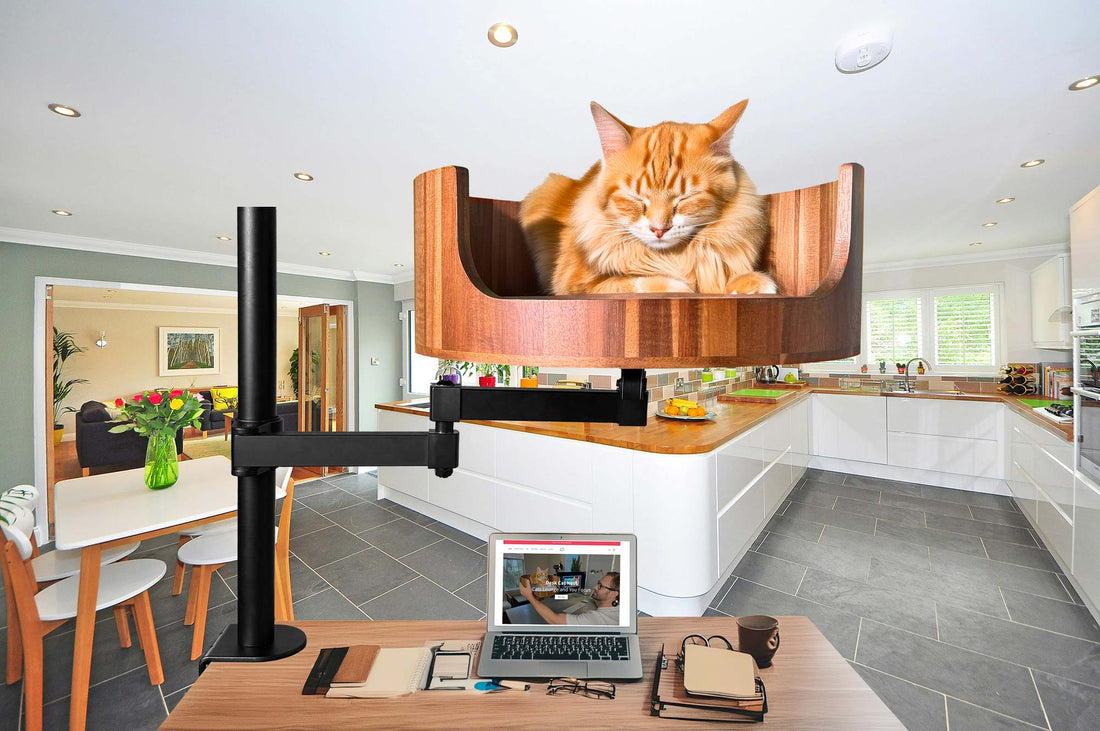
Do Cats Have Nictitating Membrane? Exploring the Facts
Share
Have you ever noticed your cat's eyes exhibiting a mysterious third eyelid that seems to appear out of nowhere? This intriguing feature is known as the nictitating membrane, a translucent inner eyelid present in many animals, including cats. In this article, we will delve into the fascinating world of feline anatomy to explore the purpose and function of the nictitating membrane in cats.
The nictitating membrane serves a crucial role in protecting and moisturizing a cat's eyes, providing an extra layer of defense against debris, dust, and potential injuries. While not as prominent as in some other species, such as birds or reptiles, the nictitating membrane in cats still plays a significant part in maintaining their ocular health. Throughout this article, we will examine the structure and mechanics of the nictitating membrane, its evolutionary significance, and how it contributes to a cat's overall well-being. Join us on this journey of discovery as we uncover the facts behind this enigmatic feature of our feline companions.
1. Cats do have a nictitating membrane, which is a third eyelid that helps to protect their eyes from dust, debris, and other potential irritants.
2. The nictitating membrane is a translucent inner eyelid that can move horizontally across the eye, providing an additional layer of defense.
3. This membrane is present in many animals, including birds, reptiles, and some mammals, and serves a crucial role in aiding vision and keeping the eye moist.
4. The nictitating membrane in cats is rarely visible under normal circumstances, but may become more noticeable during moments of stress or illness.
5. Understanding the function of the nictitating membrane can help cat owners better care for their pets' eye health and overall well-being.
## What is a Nictitating Membrane?
The nictitating membrane, also known as the third eyelid, is a transparent or translucent membrane that is present in many animals, including cats. This membrane is located in the inner corner of the eye, near the tear duct, and is responsible for protecting the eye from dust, debris, and other potential irritants. The nictitating membrane functions as an additional layer of defense against environmental hazards and helps keep the eye moist and lubricated.
## Does the Nictitating Membrane Exist in Cats?
Yes, cats do have a nictitating membrane. This specialized eyelid is not always readily visible, as it typically remains hidden beneath the lower eyelid when not in use. However, cats can voluntarily move their nictitating membrane across the eye to protect it when needed. The nictitating membrane in cats is thin and delicate, with some transparency that allows light to pass through.
## How Does the Nictitating Membrane Benefit Cats?
The nictitating membrane in cats serves several important functions beyond protection. It helps maintain the eye's health and hygiene by spreading tears across the cornea. Additionally, the nictitating membrane can provide a clear protective barrier during activities that may pose a risk of eye injury, such as hunting or exploring rugged terrain. This membrane also plays a role in aiding cats to see clearly underwater, as it helps protect the eye while swimming or hunting for fish.
## Common Conditions Affecting the Nictitating Membrane in Cats
While the nictitating membrane is a vital part of a cat's eye anatomy, it can be susceptible to certain conditions that may impact its function. For example, cherry eye, a prolapse of the nictitating membrane, can occur in cats and lead to irritation and discomfort. Other issues like infections or tumors can also affect the nictitating membrane, requiring veterinary intervention to address and treat these conditions promptly.
## Conclusion
The nictitating membrane is an essential component of a cat's eye structure, offering protection, lubrication, and additional defense mechanisms. Understanding the role of the nictitating membrane in cats can help pet owners appreciate the complexity of their feline companions' ocular anatomy and take proactive steps to ensure eye health and well-being.
Frequently Asked Questions
Do cats have a nictitating membrane?
Yes, cats do have a nictitating membrane, also known as a third eyelid. This translucent membrane helps protect their eyes from debris and helps keep their eyes moist.
Is the Desk Cat Nest safe for cats with a nictitating membrane?
Yes, the Desk Cat Nest is safe for cats with a nictitating membrane. The cozy design of the nest provides a comfortable and secure place for your cat to rest and relax.
Can cats with a nictitating membrane easily access the Desk Cat Nest?
Yes, cats with a nictitating membrane can easily access the Desk Cat Nest. The low entrance allows cats to enter and exit the nest without any difficulty.
Will the Desk Cat Nest help cats with a nictitating membrane feel more secure?
Yes, the Desk Cat Nest provides a sense of security for cats with a nictitating membrane. The enclosed space mimics the feeling of a safe, enclosed environment, helping cats feel relaxed and comfortable.
In conclusion, the Desk Cat Bed is a valuable choice for cat owners concerned about their feline companions' nictitating membranes. This innovative product provides a comfortable and secure space for cats to relax and rest, promoting overall eye health and reducing the risk of irritation to the nictitating membrane. With its cozy design and durable materials, the Desk Cat Bed offers numerous benefits for both you and your beloved pet. Make the smart choice for your cat's well-being and invest in a Desk Cat Bed today.

